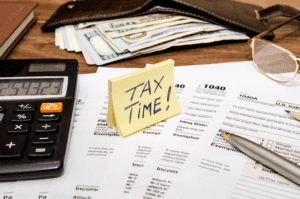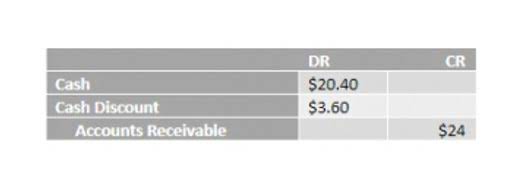
As the name suggests, this type of approach considers your business’s total net asset value, minus the value of its total liabilities, according to your balance sheet. This being said, because this small business valuation method is relatively imprecise, your business’s worth will ultimately be based on negotiation, especially if you’re selling your business or seeking an investor. Although you may be able to convince a buyer of your business’s worth based on immeasurable factors, it’s unlikely that this approach will be particularly useful for gaining investors. This being said, if you need to determine the value of your business, it’s worth understanding how this process works—even if you ultimately decide to hire a professional. In this guide, therefore, we’ll break down the seven most common business valuation methods, how they work, and how each approach may (or may not) be beneficial to your small business.

How Do You Calculate Times-Revenue?
- The multiple varies by industry and other factors but is typically one or two.
- If a seller is motivated to sell, having a low times multiple may be a good thing as it may be seen by buyers as a cheaper, potentially bargain price compared to companies with much higher multiples.
- From this you’ll subtract the portion of earnings that’s attributable to your assets alone.
- Once you subtract all your liabilities from all your business assets, you get your book value.
- Say there are 10 companies in the group and company A has a market capitalization of $1 million.
- Each one has issues, so the buyer and seller can be expected to argue over the real value of the entity.
Analysts who want to place a value on an asset normally look at the prospective future earning potential of that company or asset. At the end of the day, business valuation is complicated—especially considering the different methods that are available to evaluate your business and determine its economic worth. At the most basic level, business valuation is the process by which the economic worth of a company is determined. Andrew gives speaking presentations on request.Andrew helps business owners plan, value and execute selling or buying a business in California with the California Dept of Real Estate. This valuation is good for business owners who are looking to sell their company in the next 2 to 5 years. In its most basic form, the asset-based value is equivalent to the company’s book value or shareholders’ equity.

Merger specialists favor market-based valuation methods
- An adjusted asset-based valuation seeks to identify the market value of assets in the current environment.
- For equipment or other depreciating assets, that value is usually somewhere between the sale price and the depreciated value.
- If you are operating in a growth sector, then you will see much higher valuations than if you’re in a depressed sector.
- Typical discounts range from 20 to 40 percent, although greater discounts might be possible depending on the facts of the situation.
- This method is based on projections of future cash flows which are adjusted to get the current market value of the company.
- A multiplier is a metric for determining the relative importance of one industry to other industries in a given region.
The most common valuation formulas are the capitalized earnings, the discounted cash flow, the relative valuation formula, the enterprise value to EBITDA multiple, and the asset-based. The present value of your business takes into account current and future cash flows to figure out what your business is worth now as well as later on. This determines whether or not your company is a going concern—a business with stable future earnings, that can keep operating indefinitely without being liquidated.
Adjusting Net Assets
Investing in a security, such as a stock or a bond, is essentially a bet that the current market price of the security is not reflective of its intrinsic value. A company should only invest in projects that increase its net present value. Therefore, any investment decision is essentially a mini-valuation based https://www.bookstime.com/ on the likelihood of future profitability and value creation. The book value approach may be particularly useful if your business has low profits, but valuable assets. Ultimately, the liquidation value asset-based method operates with a sort of urgency that other formulas don’t necessarily take into account.

The market has taken notice that, while Tesla is much smaller today than Ford or GM in total enterprise value and revenues, that may not always be the case. One way to think about these ratios is as part of the growing perpetuity business valuation formula equation. A growing perpetuity is a financial instrument that pays out a certain amount of money each year—which also grows annually. Imagine a stipend for retirement that needs to grow every year to match inflation.

Asset-Based Valuation
While you may be pleased by the results, your business’s value isn’t a vanity metric. A proper small business valuation can be important if you’re planning on selling your business, merging, buying out other owners, applying for a business loan, offering employees equity, or going through a major life event. Company valuation, also known as business valuation, is the process of assessing the total economic value of a business and its assets. During this process, all aspects of a business are evaluated to determine the current worth of an organization or department. The valuation process occurs for various reasons, such as determining sale value and tax reporting. To understand the valuation of a company at an individual level, it helps to know more about the different business valuation methods that can be used.
It also looks at revenues, rather than profits, which may paint a truer picture of a company’s value. This method of valuation can, however, be helpful for newer businesses that aren’t generating consistent revenues or profits yet. Return on investment refers to the return an investor can expect from placing their capital into a specific investment vehicle. In terms of business valuation methods, this option bases value on what type of ROI an investor could receive from putting money into the business. With the earnings multiplier method, you’re finding the valuation of a business as measured by its current share price and earnings per share (EPS) ratio. Earnings per share represents the profit per common share compared to the company’s profits as a whole.
In this situation, having a succession plan may increase the universe of potential buyers and adds value to the business. “Business owners have unrealistic ideas of what their business is worth,” the article notes. Learn why business valuation can be important, the key factors that affect business valuations, and how to best estimate valuations.
Asset-Based Valuation Method
Betty Wainstock
Sócia-diretora da Ideia Consumer Insights. Pós-doutorado em Comunicação e Cultura pela UFRJ, PHD em Psicologia pela PUC. Temas: Tecnologias, Comunicação e Subjetividade. Graduada em Psicologia pela UFRJ. Especializada em Planejamento de Estudos de Mercado e Geração de Insights de Comunicação.

